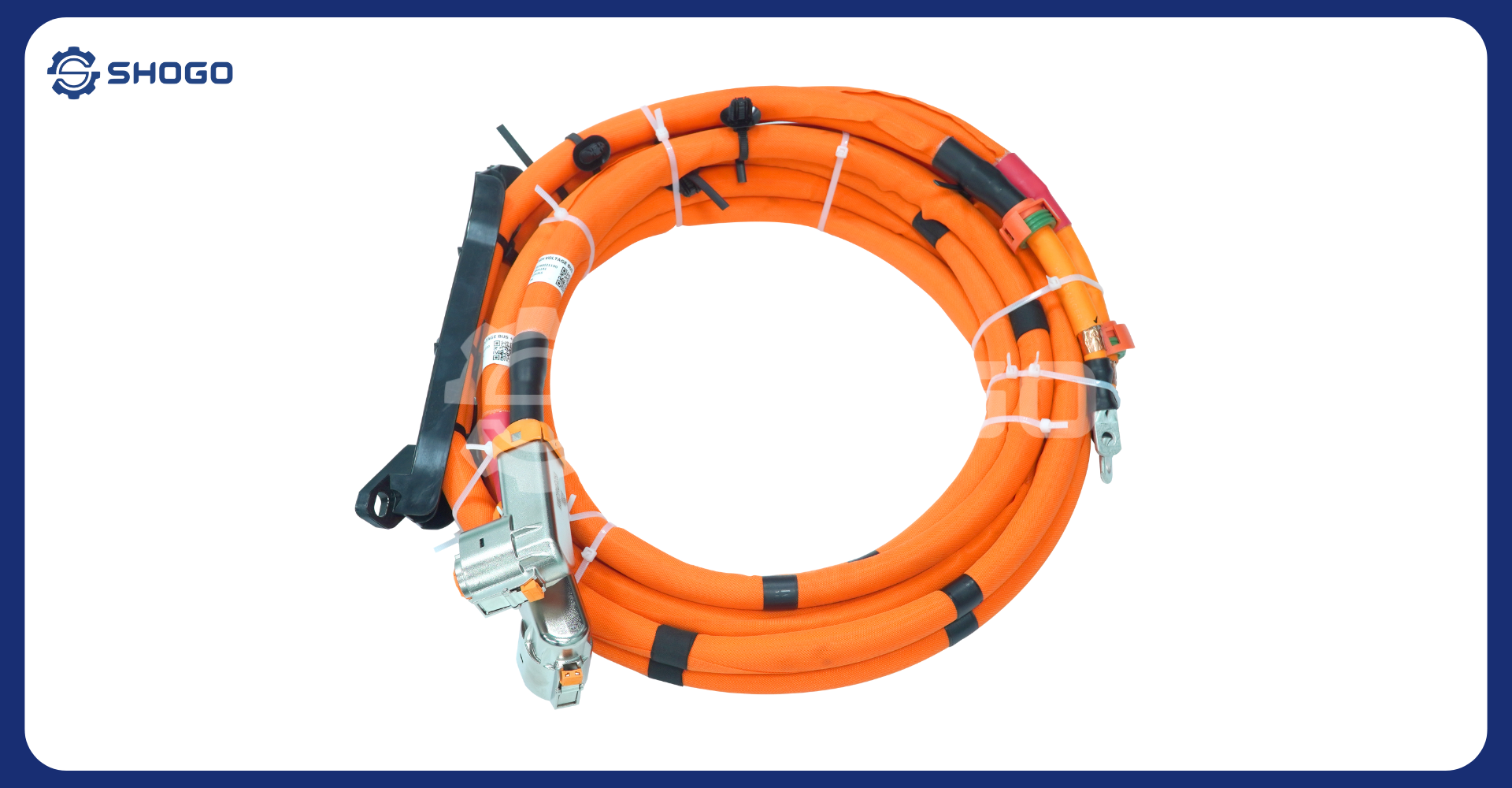
Introduction
In an electric vehicle’s drivetrain system, high-voltage cables play a critical role. These components connect the high-voltage battery pack to essential devices such as the inverter, electric motor, fast-charging systems, and high-voltage air conditioning. Choosing the right cable ensures not only efficient power transmission but also the overall stability and safety of the vehicle.
Among the various options available, EVHV cable stands out thanks to its compliance with technical standards, long-term durability, and high safety performance.
Key Specifications
| Parameter | Typical Value |
|---|---|
| Rated Voltage | 600V – 1000V DC |
| Operating Temperature | -40°C to +125°C |
| Conductor Type | Multi-stranded copper, high conductivity |
| Shielding | EMI/RFI shielding layer |
| Outer Jacket | Heat-resistant, flame-retardant orange insulation |
| Connector Type | HVIL – High Voltage Interlock Loop (auto-disconnect upon detachment) |
Outstanding Features of the EVHV Cable
| Feature | Description |
|---|---|
| 🔰 Maximum Safety | Orange color coding warns of high voltage, minimizing maintenance risks. HVIL connectors automatically disconnect the circuit when detached. |
| 🔥 Heat and Flame Resistance | Special outer insulation allows stable performance near high-temperature zones like electric motors. |
| ⚙️ Stable Power Delivery | High-purity copper core and shielding reduce energy loss and protect sensitive control units. |
| 🧩 Easy Installation & Broad Compatibility | Various connector options ensure compatibility with most EV systems on the market. |
Common Applications
| System | Typical Use Case |
|---|---|
| 🔋 Main Drivetrain | Connecting battery → inverter → electric motor |
| ⚡ Fast Charging | Connecting DC charge port → battery pack |
| ❄️ High Voltage A/C | Powering the high-voltage electric compressor |
| 🔄 Regenerative Braking | Transmitting recovered energy back to the battery |
Why It’s Essential to Choose the Right High Voltage Cable
Using the wrong cable—or one that doesn’t meet safety standards—can lead to serious issues, including:
-
Overheating and potential fire hazards
-
Electrical leakage damaging internal components
-
Lower power efficiency, reducing the vehicle’s driving range
-
Connector incompatibility causing loose or failed connections
Choosing a certified EVHV orange high-voltage cable is not just a technical requirement—it’s a key factor in ensuring safe, stable, and long-lasting operation.
Conclusion
The EVHV cable is one of the most critical components in an electric vehicle’s power system. With its advanced design, excellent heat resistance, effective shielding, and strong safety features, it’s well-suited for core functions like power transmission, fast charging, and high-voltage HVAC systems.
If you’re looking for a reliable, internationally certified high-voltage cable solution for your EV project, the EVHV orange cable is a smart and dependable choice.


